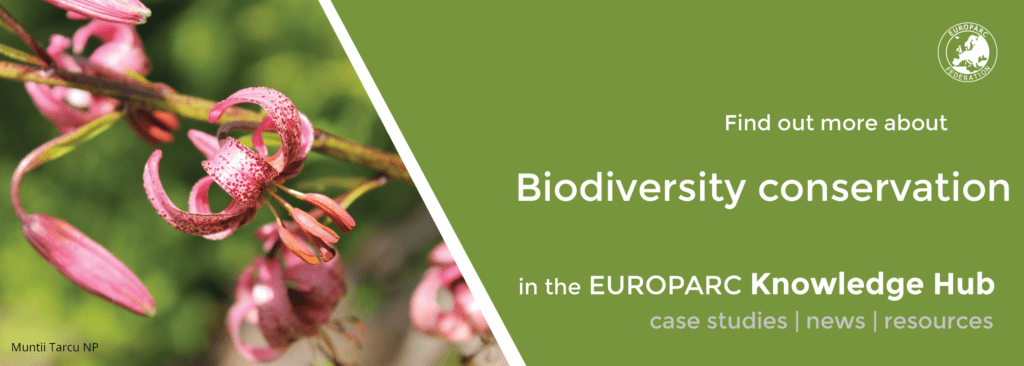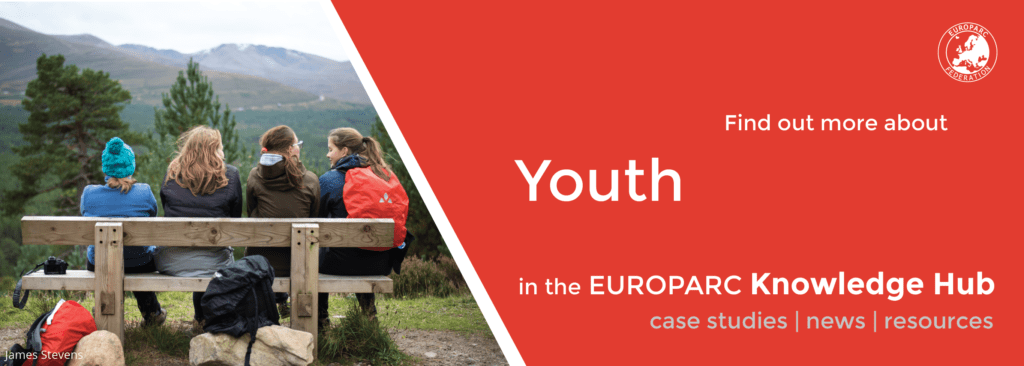Case study: Promoting biodiversity in urban areas
The Finnish concept of National Urban Parks (NUP) is promoting biodiversity in urban areas.
Urbanisation is a mega trend all over the world. Living in an urban environment offers benefits for residents such as more employment opportunities and higher incomes, and for businesses lower input costs or greater opportunities for cooperation and innovation. But this rapid urbanization has many negative effects, a decline in biodiversity due to habitat loss and fragmentation being one of them. The Finnish concept of National Urban Parks (NUP) is promoting biodiversity in urban areas.
The foundation of the first national city park in Sweden 1995 has raised the debate in Finland on how to build cities in a more sustainable way, protecting nature and green spaces. The Ministry of the Environment in Finland has identified several problems in the context of urban areas:
- Urban structure dominates urban planning instead of ecology
- Building causes irreversible changes in urban natural and cultural heritage and identity of cities
- Urban sea and lake bays as well as wetlands are being filled and built, thus changing the shorelines, reducing biodiversity and blocking the views and access of people
- Most people want to live in an urban environment that has easy access to a green area.
As a result the Finnish National Urban Park (NUP) concept, a tool for promoting sustainable urban planning was implemented. The concept was taken as part of the Land Use and Building Act, which came into force on 1.1.2000.
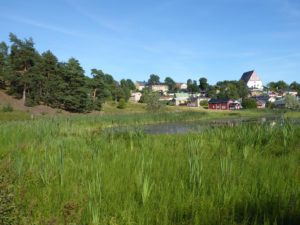
Porvoo national urban park
National urban parks as part of the Finnish biodiversity strategy
National Urban Parks (NUPs) were created as a tool and method to promote biodiversity. National urban parks are not conventional protected areas, but rather aim to ensure a continuum from natural habitats to heavily modified parks by setting limitations to urban planning.
They include areas that are important for the conservation of biodiversity in urban environments. The green infrastructure within an urban park must be extensive and undisturbed, creating ecological corridors that encourage species to migrate. Ecological corridors must continue to lead uniformly from the center to the outskirts of towns, to the natural areas or to the countryside.
Urban parks and nature areas on the outskirts of cities are often particularly species-rich habitats.
The first Finnish National Urban park was established in 2001 in Hämeenlinna and now Finland has a network of 9 NUPs. All NUPs in Finland have one or more protected areas, Natura 2000 sites, old growth forests or even marine, lake and river ecosystems.
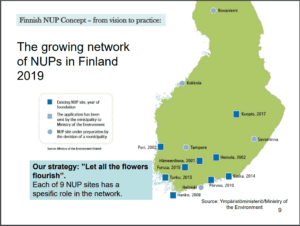
Finnish National Urban Parks
The main principles of the Law
- Preparation: The municipality applies, and the Ministry of the Environment decides.
- Ownership: Landowners in NUP can be municipalities, state, public entities and private.
- Protection: By land use plans and different Acts
- Management plan: The values of a NUP are managed by a management plan drawn up by the municipality and approved by Ministry of the Environment.
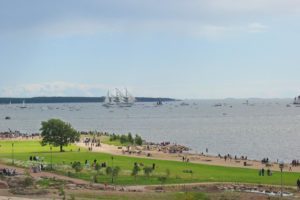
Kotka national Urban park
Challenges
They were faced with different challenges during the stages of applying and managing National Urban Parks.
At first, it was difficult to get all municipal politicians to get to understand that the protection of natural- and cultural heritage is, in fact, the essential tool for the sustainable development of the city. For some cities, the preparatory process (5-10 years) took too long. During that period, the city’s political decision makers might have changed, and the new ones were not committed to preparatory work and goals.
Lessons learnt
The preparation and decision-making process according to the “bottom-up” approach, the application of the “Let all flowers bloom” strategy and the technical criteria chosen to complement the legislation were rated as good and successful.
For municipal decision-makers and residents, it is a learning process about the importance of urban nature and the need to integrate ecological considerations into urban planning.
Indirect economic benefits from the new status, for example in the tourism sector, require long-term marketing.
Participatory planning involving municipalities and regional authorities, local residents and NGOs was essential in the various phases of application and management of the National Urban Park.
Read the original case study on Finnish National Urban Parks: a tool for promoting biodiversity in urban areas. And find further information about NUPs here.
EUROPARC webinar in Spanish “Los bosques Mediterráneos en la encrucijada del Cambio Climático”
- 23rd of June 2020
- 11:30h CEST
- Register here
Next tuesday June 23rd, we will host the #EUROPARCwebinar “Mediterranean forests in the crossroads of Climate Change” in Spanish language. In this event we will learn more about the characteristics of Mediterranean forests, why they are especially vulnerable to #climatechange effects and what management measures can improve their #climatechangeadaptation . Participation is free, previous registration needed.
El próximo 23 de Junio celebraremos el webinario “Los bosques Mediterráneos en la encrucijada del Cambio Climático”. En este evento aprenderemos acerca de las características de los #bosques Mediterráneo que los hace especialmente vulnerables a los efectos del #cambioclimatico y sobre medidas de gestión que pueden mejorar su #adaptacion al dicho cambio. La participación es gratuita e inscripción previa es necesaria.
Partner wanted for a youth engagement project
An international approach: Partner wanted for a youth engagement project!
Jackie Wragg is the Youth Engagement Officer with Moors for the Future and South West Peak Landscape Partnership in the UK. In 2018 she started the survey “The Natural World and Me” about youth engagement. She is now looking for another project on an international level to partner up with in order to bring an international link to the survey and future analysis.
About the survey
In her role as youth engagement officer Jackie developed an anonymous survey for young people aged 11 to 18. The survey can be completed on PC or smartphone/tablet and takes participants around 10 minutes to complete. The aim is to gather data that measures:
- level of connectedness to nature
- level of understanding of ecosystem services
- appreciation and attitudes towards environmental issues
- the participants likelihood to take a number of different positive actions towards the environment/their connection to nature
The survey has been ongoing since 2018 and allows the monitoring of the impacts of a range of engagement measures, resulting in a deeper understanding of the audience (in terms of youth engagement) and also allows measurements on impacts of the different youth engagement activities employed. Through the survey, Jackie can find out which of the programmes are most effective and in which areas they achieve the most and best results.
The data is a useful resource to support a wide range of research questions. As the survey started in late 2018 it is already possible to look at temporal trends that could illustrate the growing awareness of, and concern about issues of environment and sustainability amongst young people.
An international approach
Now Jackie is looking for an international partner so data can be collected from a similar project across international borders. This way there are more opportunities to utilise the data, make comparisons and to observe differences in responses of young people to engagement measures made.
What would be wonderful is to pair up with another project delivering similar outcomes to ours in youth engagement who would like to try and include some of their audience in the survey. This may or may not require translation and we could discuss that if a project did want to get involved. – Jackie Wragg
Results and potential
There have been 326 responses from July 2018 to February 2020. Due to the current situation regarding COVID-19, engagement activities are of course on hold. However the aim is to gather post-engagement responses once the engagement activities in Protected Areas resumes.
Is your protective area interested in participating the project? Feel free to contact Jackie Wragg for additional information.
Contact:
Jackie Wragg, Youth Engagement Officer with Moors for the Future and South West Peak Landscape partnership in the UK, here she runs two EUROPARC Junior Ranger Groups in the Peak District National Park.
Jackie.Wragg(at)peakdistrict(.)gov.uk
ONLINE EUROPARC CONFERENCE 2020
The EUROPARC Conference is the event of the year for those working in Europe’s Protected Areas and Natura 2000 sites.
Due to the challenges arising from covid-19 this year’s EUROPARC conference will now be ONLINE!
International cooperation and connection is more important than ever, so we want to ensure we provide this opportunity to bring members together, albeit virtually!
Our new future: How ready are you?
EUROPARC CONFERENCE 2020, will be an innovative 2 day ONLINE event on the 8th AND 9th of September. After we have looked at the value of nature across multiple sectors of society at EUROPARC Conference 2019, in 2020 we will look to the future… We will be exploring, what skills and capacities protected areas need, to implement the 2030 biodiversity strategy, in the post COVID-19 world. We will bring you an interactive online experience, to connect with colleagues from across Europe and bring you the best of EUROPARC networking, in these challenging times.
DETAILS and registration will be available at the beginning of JUNE: So SAVE THE DATE!
The conference originally scheduled for 27-30th October, Neusiedler See – Seewinkel National Park Austria, will now take place in MAY 2022. We will gather then, to consider Communicating in the 21st Century? Question your mind set! Perhaps even more important as we will have absorbed the implication of a post-COVID world, and indeed will be in year one of what will be by then the new EUROPARC strategy.
The EUROPARC conference in May 2022 in Austria, will also incorporate the Transparcnet meeting so will have an emphasis on transboundary cooperation and communications.
This year’s General Assembly of 2020 will also be ONLINE and will take place at the originally scheduled date of 27th October. More details will follow.
So EUROPARC members have the following to look forward to
- September 8/9th 2020 EUROPARC conference . Our New Future: How Ready Are We?
- October 27th EUROPARC General Assembly
- October 2021 EUROPARC conference . Location TO BE ANNOUNCED IN SEPTEMBER!!
- May 2022 EUROPARC conference Communicating in the 21st Century? Question your mindset! Neusiedler See – Seewinkel National Park Austria,
- We will also have an Autumn conference in 2022 in conjunction with the NaturAdapt climate change and protected areas, project.
